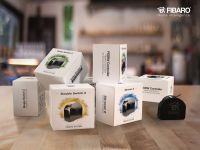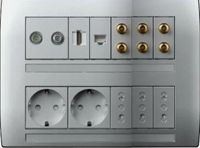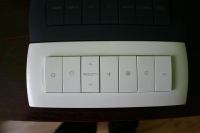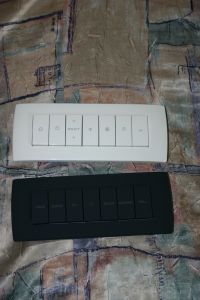What is a smart home?
A smart home is actually a system of cooperating devices that care about the safety and comfort of household members, but also about energy savings, rational media management, etc. The whole thing is managed centrally on the basis of information collected from the environment and the settings made. The user can also manually control the operation of the system and its devices. In modern solutions, it can be done remotely - from anywhere in the world with Internet access.
Basic functions of a smart home:
- lighting control,
- heating control,
- device management,
- multimedia management,
- control of the home environment,
- protection against fire and flooding.
System components
The basic element of the FIBARO system is the central unit. It is a specially designed microcomputer that manages the operation of the entire smart home. The device processes the received information and issues commands to the executive modules. The switchboard is the only necessary element of the FIBARO system. All others can be freely switched on and off, but there is no system without the control panel. Another important class of devices are sensors. They are directly responsible for detecting motion, smoke, flooding, measuring temperature or light intensity. It is worth mentioning that the FIBARO system also allows the use of analog sensors, which opens up an almost unlimited field of individual applications for users. The last important element of the system are modules, also called actors. Their task is to execute the commands received from the headquarters. Most often, they control the flow of electricity and thus control the operation of specific devices - roller shutters, gates, electrical sockets, etc. An interesting addition to the system are triggers, i.e. devices that allow you to launch programmed actions manually, by voice or with gestures. As standard, the control of a smart home is carried out via a smartphone. Triggers shorten this path and free the household from having to carry a cell phone.
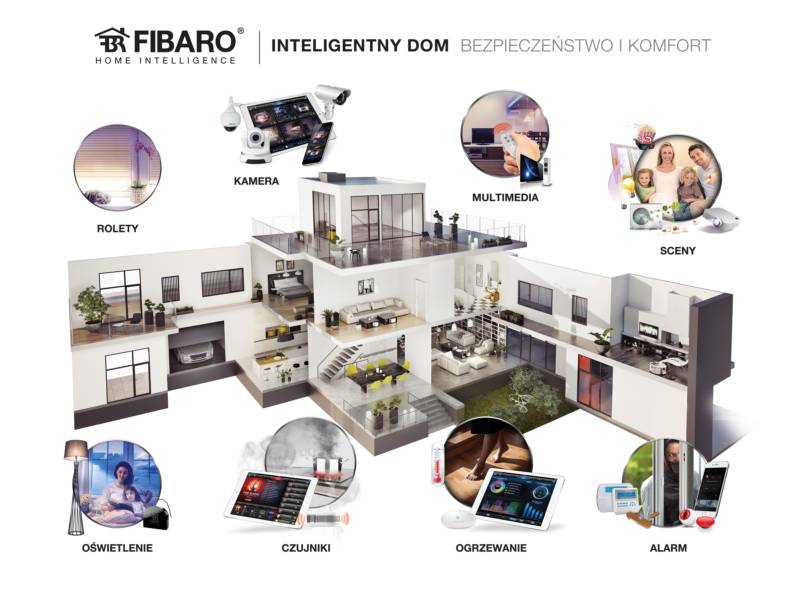
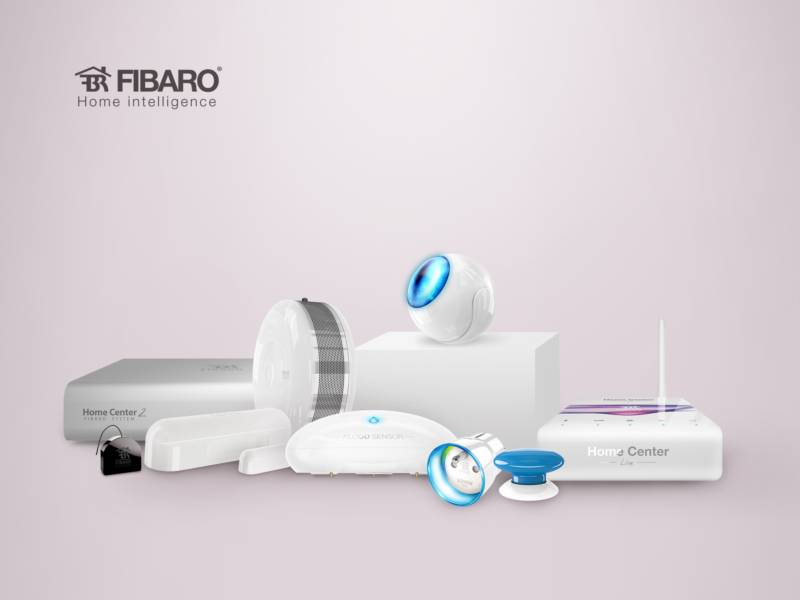
No cables
In the FIBARO system, devices communicate wirelessly via the Z-Wave protocol. This technology, using mesh topology, provides a high level of security and very good throughput. Each device in the Z-Wave network is also a signal receiver and transmitter, which increases the range of the system as it expands naturally. After connecting the control panel to the Internet, remote access to the system is possible from anywhere in the world.
Installation - simple and convenient
Installation of the FIBARO system is possible in both new and older buildings. Due to the wireless communication of devices, it is practically non-invasive. It does not require repairs, forging walls or laying cables. For the proper operation of a smart home, a standard electrical installation and appropriate system devices - a control panel, modules and sensors selected in accordance with the needs and tasks they are to fulfil, are sufficient. Typical executive modules are placed in flush-mounted boxes. Their miniature dimensions (40x36x15mm) allow the use of virtually any can used in the world. FIBARO recommends certified installers for installation, but the task is so simple that any electrician or even a hobbyist can handle it. Other types of modules (e.g. light dimmers) are equally easy to install in their intended places - switches, boxes, etc. Sensors and triggers do not require interference in the installation. They are Plug & Play devices ready to use out of the box. It is enough to assign them to the system and you can enjoy their properties. On this principle, e.g. Smoke Sensor, Motion Sensor, Flood Sensor and Wall Plug.
The main advantages of the FIBARO system
The FIBARO system is a unique proposition on the market. Its most important advantages are wireless, modular architecture and compatibility with devices from other manufacturers. Wireless allows installation at any time and place - without renovation and forging walls. Freedom from cables is also mobility - the entire system can be packed when moving and taken with you to the next home. The modular architecture ensures perfect adaptation of the system to the needs. At any time, you can expand it with more devices or reduce it if necessary. There is no need to write about the advantages of cooperation with devices from other manufacturers. It is enough to mention that the FIBARO system can work with products from such companies as .....
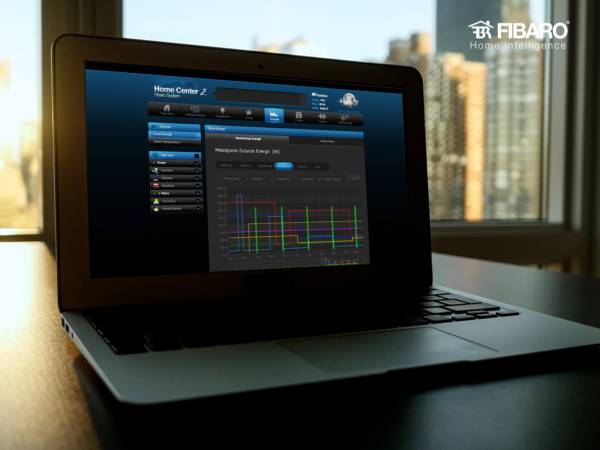
Intuitive controls
With all its capabilities, FIBARO remains a friendly and easy-to-use system. The control is carried out using applications from mobile devices (iOS, Android) and does not require the purchase of separate panels. Access to the system is possible from anywhere in the world. This means both access to configuration options and the ability to control specific smart home devices. All changes are made through the interface from the level of a web browser. Each member of the household can be assigned an account with a set range of permissions. Through the interface, Z-Wave devices are added and removed, sections and scenes are created, i.e. extensive sequences of actions.
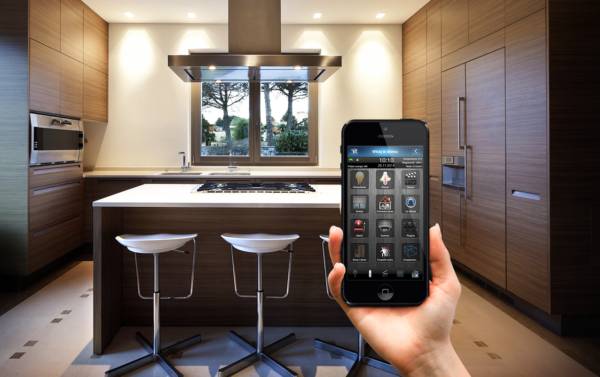
Security
Security is another advantage of the FIBARO system. The exchange uses two-factor identity verification. Remote connections, on the other hand, are encrypted and sent using a secure HTTP/SSL protocol used e.g. in banking. The Z-Wave technology used by FIBARO currently enjoys the best reputation in terms of security. It is chosen, for example, by manufacturers of locks and alarm systems. It is worth noting that individual devices also have their own security features, and the alarm functions are additionally protected with a special PIN code. User data is stored locally in the central device. The system provider has no access to them - FIBARO treats privacy as seriously as security.

The online store www.InstalatOn.pl is the official distributor of FIBARO products. If you have an installation company, we encourage you to register an account on the store in order to receive attractive commercial conditions.
A smart home is actually a system of cooperating devices that care about the safety and comfort of household members, but also about energy savings, rational media management, etc. The whole thing is managed centrally on the basis of information collected from the environment and the settings made. The user can also manually control the operation of the system and its devices. In modern solutions, it can be done remotely - from anywhere in the world with Internet access.
Basic functions of a smart home:
- lighting control,
- heating control,
- device management,
- multimedia management,
- control of the home environment,
- protection against fire and flooding.
System components
The basic element of the FIBARO system is the central unit. It is a specially designed microcomputer that manages the operation of the entire smart home. The device processes the received information and issues commands to the executive modules. The switchboard is the only necessary element of the FIBARO system. All others can be freely switched on and off, but there is no system without the control panel. Another important class of devices are sensors. They are directly responsible for detecting motion, smoke, flooding, measuring temperature or light intensity. It is worth mentioning that the FIBARO system also allows the use of analog sensors, which opens up an almost unlimited field of individual applications for users. The last important element of the system are modules, also called actors. Their task is to execute the commands received from the headquarters. Most often, they control the flow of electricity and thus control the operation of specific devices - roller shutters, gates, electrical sockets, etc. An interesting addition to the system are triggers, i.e. devices that allow you to launch programmed actions manually, by voice or with gestures. As standard, the control of a smart home is carried out via a smartphone. Triggers shorten this path and free the household from having to carry a cell phone.


No cables
In the FIBARO system, devices communicate wirelessly via the Z-Wave protocol. This technology, using mesh topology, provides a high level of security and very good throughput. Each device in the Z-Wave network is also a signal receiver and transmitter, which increases the range of the system as it expands naturally. After connecting the control panel to the Internet, remote access to the system is possible from anywhere in the world.
Installation - simple and convenient
Installation of the FIBARO system is possible in both new and older buildings. Due to the wireless communication of devices, it is practically non-invasive. It does not require repairs, forging walls or laying cables. For the proper operation of a smart home, a standard electrical installation and appropriate system devices - a control panel, modules and sensors selected in accordance with the needs and tasks they are to fulfil, are sufficient. Typical executive modules are placed in flush-mounted boxes. Their miniature dimensions (40x36x15mm) allow the use of virtually any can used in the world. FIBARO recommends certified installers for installation, but the task is so simple that any electrician or even a hobbyist can handle it. Other types of modules (e.g. light dimmers) are equally easy to install in their intended places - switches, boxes, etc. Sensors and triggers do not require interference in the installation. They are Plug & Play devices ready to use out of the box. It is enough to assign them to the system and you can enjoy their properties. On this principle, e.g. Smoke Sensor, Motion Sensor, Flood Sensor and Wall Plug.
The main advantages of the FIBARO system
The FIBARO system is a unique proposition on the market. Its most important advantages are wireless, modular architecture and compatibility with devices from other manufacturers. Wireless allows installation at any time and place - without renovation and forging walls. Freedom from cables is also mobility - the entire system can be packed when moving and taken with you to the next home. The modular architecture ensures perfect adaptation of the system to the needs. At any time, you can expand it with more devices or reduce it if necessary. There is no need to write about the advantages of cooperation with devices from other manufacturers. It is enough to mention that the FIBARO system can work with products from such companies as .....

Intuitive controls
With all its capabilities, FIBARO remains a friendly and easy-to-use system. The control is carried out using applications from mobile devices (iOS, Android) and does not require the purchase of separate panels. Access to the system is possible from anywhere in the world. This means both access to configuration options and the ability to control specific smart home devices. All changes are made through the interface from the level of a web browser. Each member of the household can be assigned an account with a set range of permissions. Through the interface, Z-Wave devices are added and removed, sections and scenes are created, i.e. extensive sequences of actions.

Security
Security is another advantage of the FIBARO system. The exchange uses two-factor identity verification. Remote connections, on the other hand, are encrypted and sent using a secure HTTP/SSL protocol used e.g. in banking. The Z-Wave technology used by FIBARO currently enjoys the best reputation in terms of security. It is chosen, for example, by manufacturers of locks and alarm systems. It is worth noting that individual devices also have their own security features, and the alarm functions are additionally protected with a special PIN code. User data is stored locally in the central device. The system provider has no access to them - FIBARO treats privacy as seriously as security.

The online store www.InstalatOn.pl is the official distributor of FIBARO products. If you have an installation company, we encourage you to register an account on the store in order to receive attractive commercial conditions.




